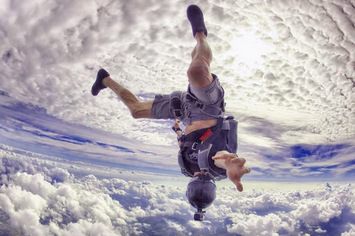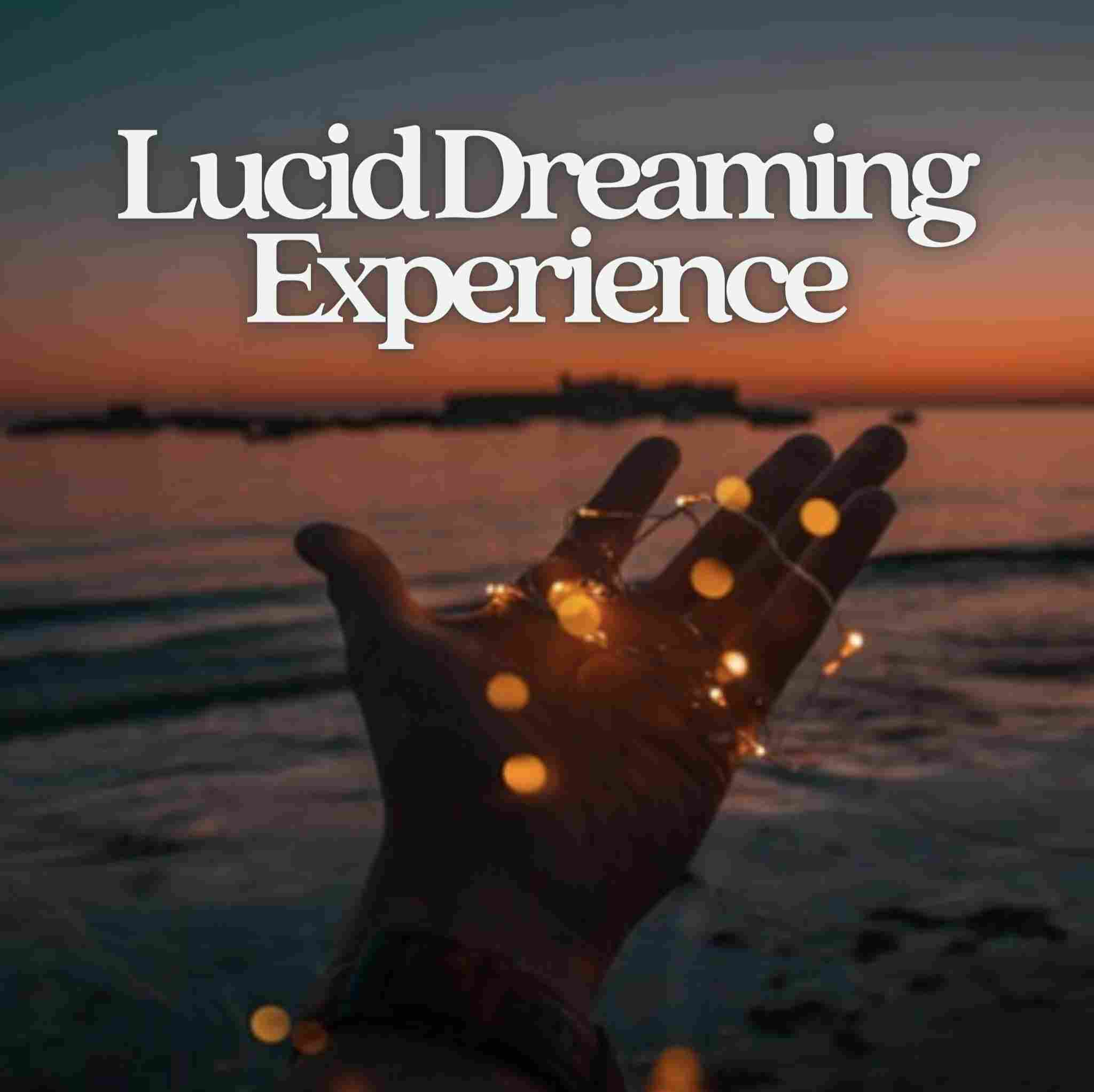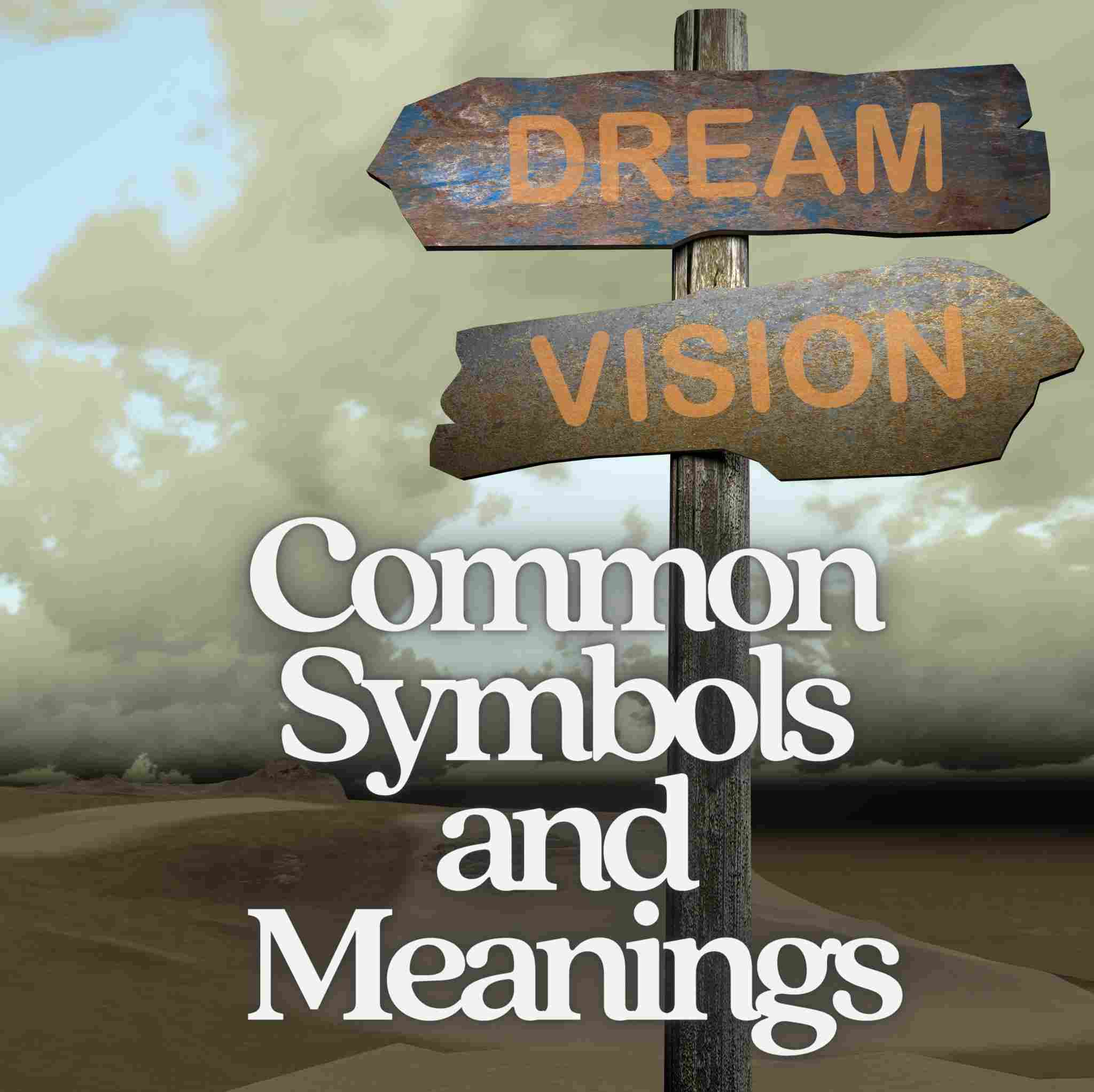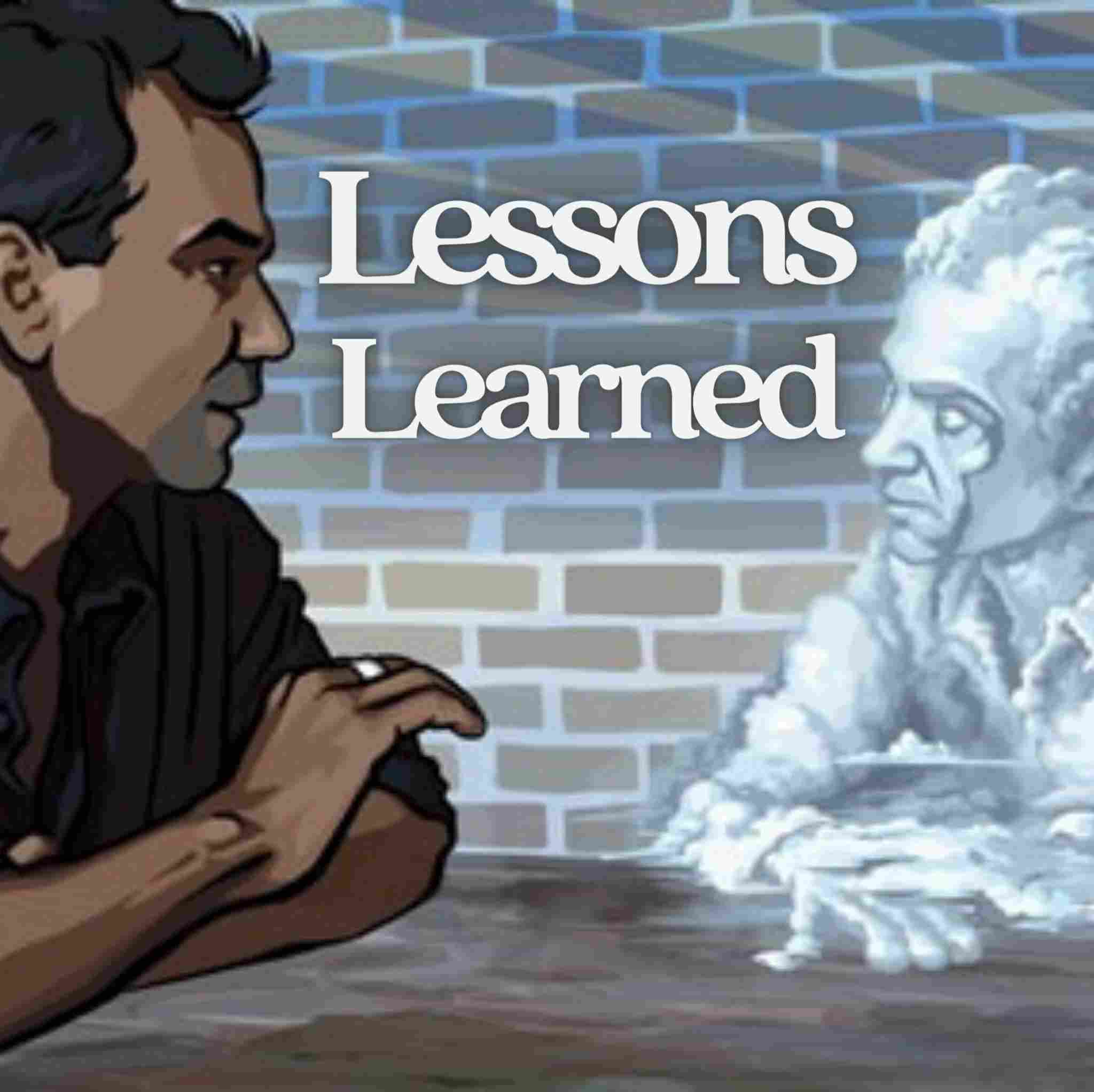How to Have Wake Induced Lucid Dreams (WILDs)
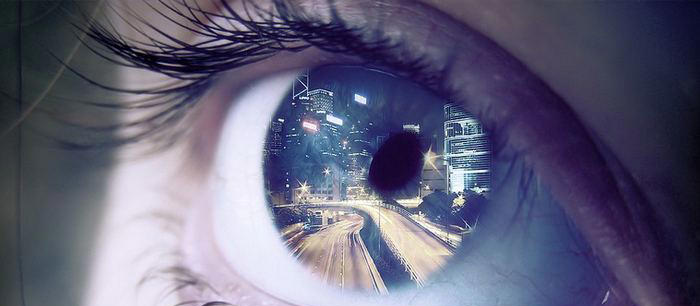
The Wake Induced Lucid Dream is a startling brain hack. To have a WILD lucid dream, you hand-off your consciousness from a waking state directly to a sleeping dream state. There is literally no lapse in awareness.
Today we'll examine the most important rules for inducing WILD lucid dreams, including choosing the best time of night, how to relax into a hypnagogic state, and how to enter a lucid dream via one of two routes: visualization or the out-of-body exit.
Once you can successfully launch WILD lucid dreams, you'll be able to have lucid dreams on demand, experience heightened dream consciousness, and explore extraordinary out-of-body dream phenomena. It is well worth the effort of practicing this routine, while even the unfruitful attempts are very pleasant journeys through the hypnagogic state.
What Are WILD Lucid Dreams?
The WILD technique comes from Tibetan Dream Yoga, a Buddhist philosophy that uses dreams as a pathway to enlightenment. Yogis seek to carry out certain tasks in their lucid dreams, to discover the nature of reality and to realize emptiness.
Just like falling asleep, inducing a WILD lucid dream is both easy and hard. That's the paradox. Your focus should be on setting up the optimal conditions so that your brain can do the rest intuitively. It may help to know that some people teach themselves to have WILD lucid dreams as children. They think of it as "dreaming yourself to sleep".
Think about how you fall asleep every night. What does your body feel like? What goes on in your mind? What are the last few moments of awareness like?
This is the feeling you need to replicate for a WILD—with one key difference. This time, as your body falls asleep, your mind must stay awake.
That may sound like an alien concept. But when it happens, you'll be surprised at how natural it feels. And you'll slip straight into the dream state with full conscious awareness.
Before you begin, here are two points of note:
- Practice WILDs only after 4-6 hours of sleep. This is when you've had sufficient deep sleep and you naturally enter the longest phases of REM sleep.
- Consider taking a lucid dreaming supplement. This is completely optional but certain herbs and supplements are known to potentiate this method.
Step 1. Relax into The Corpse Pose
Lie on your back in the corpse pose. Although other sleeping postures work too, this is often the most effective because it doesn't cut off the blood supply to any limbs and allows you to imagine floating for the out-of-body dream exit (step 3b).

Empty your mind of thoughts and mental chatter. Gaze into the blackness of your closed eyelids. When thoughts pop up, redirect your attention back to the task at hand: relaxing your body, one muscle group at a time, and breathing, slowly and consciously.
You can use any number of meditation routines here. I can recommend:
- A simple breathing meditation, such as box breathing to slow counts of four. Breathe in through your nose while counting to four. Hold your breath for four. Exhale through your mouth for four. Hold for four. Focus on the physical sensation of air flowing through your nostrils, along your nasal cavity, and inflating your stomach.
- The 61-point technique to relax the body. This focuses your attention on small muscle groups around the body, consciously relaxing each one in succession.
- Listen to brainwave entrainment if you need extra help going deep. This allows you to focus on sound while your brainwaves reduce to slower frequencies and you naturally enter a more dreamy state of awareness.
If you've just woken from six hours of sleep, it may only take a couple of minutes to enter a deeply relaxed state. From cold, it feels like it takes me at least 15-20 minutes. It doesn't really matter how long it takes, as long as you can stay focused and awake.
Step 2. Observe Your Hypnagogia
After a while, you'll notice the onset of the hypnagogic state. This is most often characterized by phosphorescent patterns flowing behind your closed eyelids. Allow yourself to be mesmerized by the color play and let it draw you in.
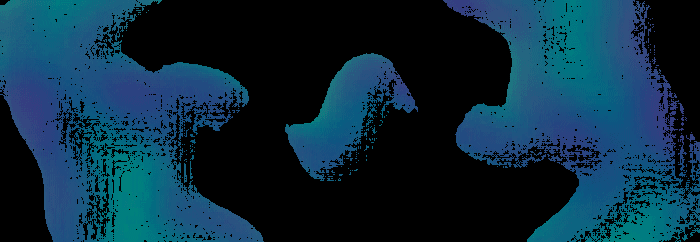
If it helps draws you deeper into meditation, you can interact with your hypnagogia. For instance, say the word "circle" in your mind and watch passively as a circle materializes. Build up your confidence with simple shapes, then increase the complexity of the desired image, to the point where you can hallucinate the face of a loved one.
If you find this too distracting and heightens your arousal levels, resolve to simply watch the hypnagogia passively. The complexity will heighten on its own to deliver fluid geometric patterns in continuous motion. It's absolutely beautiful.
As you go deeper into the hypnagogic state, you may hear sounds like distant music, as well as physical sensations like floating or tipping out of bed. This is all normal as your mind dissociates from the waking world and begins to generate an internal dream world.
Stay relaxed and take in the richness of the experience. Expect that your mind may switch back and forth between your bedroom and the emerging dream world. Remember, your body needs to stay very soft and still to afford complete mental immersion.
Some people prefer to ignore their hypnagogia because even simply watching it move and evolve is too much of a distraction. Instead, they focus on creating a new dream from beyond the visual field. Either way, the dream world will emerge on its own, either from the hypnagogic imagery or the space beyond it.
It can help to silently and slowly repeat a mantra in your mind, such as "I'm dreaming."
If you're startled by any unusual sounds or sensations, remember that it's all coming from within. I once heard a man's voice yelling, seemingly from just outside my bedroom window, "It's f***ing winter!" Other times, I've heard familiar voices calling my name, snippets of conversation, or just a mix of curious background noises.
This includes the intense sensations associated with sleep paralysis, where you become aware that your body is fully asleep and can no longer move. The paralysis is indeed real. It happens every night when you fall asleep, only this time, you're aware of it happening. We can leverage this phenomenon in step 3(b): the out-of-body exit.
However, I prefer to ignore my resting body once the hypnagogia kicks off. Instead, I focus on an imagined dream body, which is usually standing or sitting in a dream environment. This helps me break free of the fact that I'm actually lying in bed, wards off any awareness of sleep paralysis, and projects my conscious mind into the lucid dream world.
Step 3. Create a Dream Scene
You're in quite deep now. You're hallucinating images, and perhaps physical sensations and sounds as well. You're having fleeting memory impressions having just been somewhere else. You're well and truly on the launch pad for a WILD lucid dream.
Depending on where your attention is focused, you have two options:
- The visualization method
- The out-of-body exit
3(a) The Visualization Method
If you already know how to visualize, you can start to direct your hypnagogia into a specific dream scene. Layer up the landscape like an artist painting a picture, and focus on the big sweeping strokes before you go for the smaller details.

If your hypnagogia is disobedient, try ignoring it altogether and summoning the dream imagery from your mind's eye. This goes way beyond your field of vision and doesn't involve your eyes at all. However, if you're among the 2% of the population who has aphantasia (the inability to visualize), this particular approach will sadly be impossible.
As the dream scene slowly gathers detail in your hypnagogia or your visual imagination, intensify your awareness of being right in the middle of the action.
Take in your surroundings, building up new details using all the imaginary senses at your disposal: sight, sound, touch, smell, balance, temperature, position, motion, and beyond.
Imagine moving around in this daydream. Kinetic sensations such as walking, running, or riding a bicycle are a powerful way to transport your awareness into your new dream body. And that's the critical goal: to forget about reality and exist only in this alternate inner state.
When your mind is absorbed in the visualization, your body will fall asleep altogether. This is dissociation. The transition into a WILD lucid dream is unmistakable. Your awareness will rush into the dream; suddenly, it surrounds you in three dimensions, fully tangible and interactive.
You're now lucid dreaming. It's good practice to quickly perform a reality check and say "I'm dreaming." Verbalize your desired action, explore the lucid dreamscape, or indulge in full dream control.
3(b) The Out-of-Body Exit
Sometimes you're so swept up in your hypnagogic meditation that your body falls asleep before you have the chance to visualize a dream scene. This is no big deal. Because there is an alternative route to having a Wake Induced Lucid Dream, called the out-of-body exit.
You're consciously asleep. Typically, this leaves you with the sense that you're still in your bedroom. In fact, it's a dream bedroom. And you're lying in a dream bed.
The room will look incredibly lifelike, whether it's your familiar bedroom or a temporary sleeping environment like a hotel room. But the clues are there if you look closely. Perhaps the biggest clue is that you can now see the room (and yet, the last time you checked, your eyes were closed). This is difficult to trust, however, so consider other sensory data.
What can you see on the bedside table? Is your book exactly where you left it? Are the pictures hanging on the wall all the right ones? Are the curtains completely closed? I appreciate that this sounds a bit crazy. But your dream will contain definitive differences from waking reality, and the more you focus on them, the easier it is to accept that you're dreaming. This makes the next step much easier because you're going to float out of your body.
Sometimes, your dream body can climb out of bed normally. However, you're most likely conscious of the sleep paralysis overtaking your real body, which makes it impossible to move your dream limbs. It's a whole big mess.
So how do you break this cross-wired association between your real (sleeping) body and your dream body? Since this is a dream, you have the luxury of floating, swinging, sinking, or otherwise catapulting your out of your body.
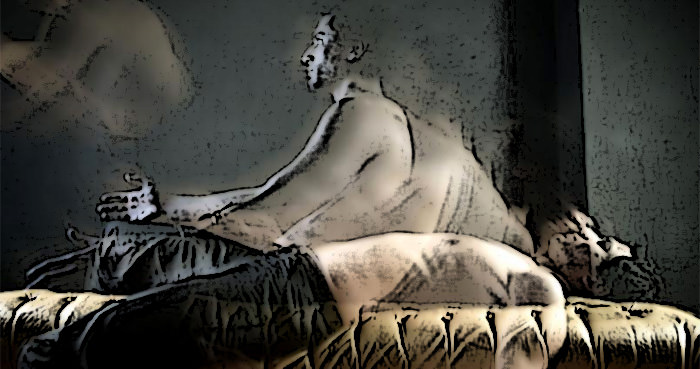
Imagine floating in water, or being on a boat or a swing. By simulating that sense of motion, you can drive the dream forward. Ultimately, I set a goal of flying out the window and this helps to get me floating out of body.
Alternatively, you can close your dream eyes and visualize a new dream scene. Say to yourself "I'm going to the mountains now". You're already lucid dreaming, so it's possible to teleport with the power of thought.
Here are a couple of things to look out for during an out-of-body exit:
- Vibrations. This is probably a form of hypnagogia which presents as a very loud buzzing sound, coming on suddenly and out of nowhere. It may feel like electricity or pressure, and it's disturbingly loud. The first time I heard it, I abandoned my WILD lucid dream attempt with the fear that I was giving myself a brain aneurism. And I was fully expecting the vibrations. In truth, they're just a very noisy distraction that means you're on the brink of falling asleep consciously. I've heard it compared to the static of a radio when you're switching between stations.
- Sleep Paralysis. Every time you go to sleep, you undergo REM atonia, also known as sleep paralysis. It prevents you from acting out your dreams. If you become aware of it while inducing a WILD lucid dream, it can feel like your limbs are going numb or there's a lead blanket moving up your body. You can snap out of this state by moving any part of your body which is not yet paralyzed (wiggle your fingers or toes). Otherwise, try not to think about your body at all and realize you're about to enter a lucid dream.
- A Presence. Sleep paralysis can be frightening and this can direct the course of the dream into a menacing but predictable direction. Paralyzed in bed with your heart pounding, you might hear someone walking down the hallway towards you, or they may already be in your room. Sometimes they push down on your chest. These are all dream manifestations of sleep paralysis combined with the fight-flight-freeze response. Just know that sleep paralysis figures can actually be benevolent too, once you develop the mindset that you're safe and this is a dream.
If and when you do encounter this bizarre scenario, whether you're practicing WILD lucid dreams or just in the course of normal human experience, here's what you can do.
Welcome your dream visitor with positive feelings. If you see the Grim Reaper and expect him to attack you, then that's probably what will happen next. On the other hand, if you see Grim and expect him to throw off his robes and reveal himself as Bart Simpson, that's on the cards too.
Next, ask them for help. Saying "Can you take me to the beach?" or "Show me how ice cream is made in the factory" Set any goal that takes you away from the environment in which you're literally paralysis because you can't break the association from your physical body.

Troubleshooting Wake Induced Lucid Dreams
Learning how to have a WILD lucid dream takes practice and an understanding of your body's sleep signals. Naturally, the first WILD is the hardest because you don't exactly know what you're aiming for. Like meditation, once you understand the process first-hand, it gets much easier. And even a so-called failed WILD attempt is still a beneficial exercise in relaxation.
The most common challenges with WILD lucid dreams tend to fall on opposite ends of the spectrum. People find they either can't relax enough, or they become so relaxed they fall asleep. My advice is merely to practice with self-awareness. Remember that it's a lot like falling asleep every night, and you won't get to sleep if you're tossing and turning. Equally, your mind has to be free of internal dialogue before you can float on this cloud.
I'm a fan of occasionally using brainwave entrainment for settling into meditative states. For beginners especially, it offers a better understanding of what you're aiming for. Meditating for 30-60 minutes regularly can help prime your mind and body for more lucid dreams, as well as being excellent for stress relief, concentration, and learning.
Finally, remember to practice WILDs when you wake up in the night, and especially in the last 2-3 hours before you get up, tapping into your longest phases of REM sleep. It shouldn't be a chore, but a chance to revel in your own inner playground. Challenge yourself to explore as many different environments as possible in your daydreams, and draw on all your senses. You'll soon find your personal entry point to the realm of WILD lucid dreams.



